Kashi Vishwanath Temple is a Hindu temple dedicated to Shiva. It is located in Vishwanath Gali, in Varanasi, Uttar Pradesh, India. The temple is a Hindu pilgrimage site and is one of the twelve Jyotirlinga shrines. The presiding deity is known by the names Vishwanath and Vishweshwara (IAST: Viśvanātha and Viśveśvara), literally meaning Lord of the Universe.
The temple had been demolished several times, most recently by Mughal Emperor Aurangzeb, who constructed the Gyanvapi Mosque on its site. The current structure was built on an adjacent site by the Maratha ruler Ahilyabai Holkar of Indore in 1780.
Since 1983, the temple has been managed by a board of trustees set up by the government of Uttar Pradesh. On 1 January 2023, a record 3.35 lakh pilgr...Read more
Kashi Vishwanath Temple is a Hindu temple dedicated to Shiva. It is located in Vishwanath Gali, in Varanasi, Uttar Pradesh, India. The temple is a Hindu pilgrimage site and is one of the twelve Jyotirlinga shrines. The presiding deity is known by the names Vishwanath and Vishweshwara (IAST: Viśvanātha and Viśveśvara), literally meaning Lord of the Universe.
The temple had been demolished several times, most recently by Mughal Emperor Aurangzeb, who constructed the Gyanvapi Mosque on its site. The current structure was built on an adjacent site by the Maratha ruler Ahilyabai Holkar of Indore in 1780.
Since 1983, the temple has been managed by a board of trustees set up by the government of Uttar Pradesh. On 1 January 2023, a record 3.35 lakh pilgrims visited the temple. In the month of January 2023, the temple saw an average footfall of above 45,000 per day. According to the Kashi Vishwanath Temple Trust, 10 crore tourists have visited the temple since the inauguration of the corridor in December 2021. The total assets of the temple, are estimated to be more than ₹6 crores.
 Ahilyabai Holkar of Indore built the current temple structure in 1780.Ancient and classical periods
Ahilyabai Holkar of Indore built the current temple structure in 1780.Ancient and classical periods
The Skand Purana contains a part titled 'Kashi Khanda', while the Brahmavaivarta Purana includes a portion known as 'Kashi Rahasya', both of which are dedicated to the city of Varanasi.[1]
As per the Kashi Khanda, there were a total of 1099 temples, out of which 513 were specifically devoted to the worship of Shiva. The scripture states that the Vishvanath temple was formerly known as Moksha Lakshmi Vilas. The temple housed a total of five mandapas (halls). The lingam of Vishwanath was situated in the garbhagriha. The remaining four mandapas include the Jnana mandapa located in the east, the Ranga mandapa situated in the west, the Aishvarya mandapa found in the north, and the Mukti mandapa located in the south.[1]
Nārāyaṇa Bhaṭṭa in his book Trishalisettu'[2] as well as Madhuri Desai describe that the temple centres around a repetition of destruction and reconstruction.[3]
Medieval period and destructionThe original Vishwanath temple, initially known as the Adi Vishveshwara Temple, was destroyed by the Ghurids in 1194, when Mu'izz al-Din Muhammad ibn Sam returned to India and defeated Jayachandra of Kannauj near Chandawar and afterwards razed the city of Kashi.[4] In a few years[year needed], the Razia Mosque was constructed in its place.[5][6][7] In 1230, the temple was rebuilt near the Avimukteshwara Temple, away from the main site, during the reign of Delhi's Sultan Iltutmish (1211–1266).[citation needed] It was demolished again during the rule of either Hussain Shah Sharqi (1447–1458) or Sikandar Lodi (1489–1517).[citation needed]
Mughal periodThe dotted line shows the portion of the temple occupied by the present Masjid.
Raja Man Singh built the temple during Akbar's reign but Orthodox Hindus boycotted it as Man Singh had let Akbar marry his sister and Jehangir his daughter.[6][9] Raja Todar Mal completed the reconstruction of the temple in 1585.[10]
In the seventeenth century, during the rule of Jahangir, Vir Singh Deo completed the construction of the earlier temple.[11] In 1669, Mughal Emperor Aurangzeb destroyed the temple and built the Gyanvapi Mosque in its place.[12][13] The remains of the erstwhile temple can be seen in the foundation, the columns, and at the rear part of the mosque.[14]
Maratha and British period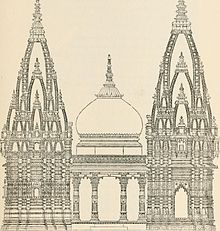 Elevation of the present temple structure
Elevation of the present temple structureIn 1742, the Maratha ruler Malhar Rao Holkar made a plan to demolish the mosque and reconstruct the Vishweshwar temple at the site. However, his plan did not materialise, partially because of the intervention of the Nawab of Awadh, who was given control of the territory.[15]: 2 In 1750, the Maharaja of Jaipur commissioned a survey of the land around the site with the objective of purchasing land to rebuild the Kashi Vishwanath temple, which in turn failed.[15]: 85
In 1785, at the behest of Governor General Warren Hastings, Collector Mohammed Ibrahim constructed a Naubatkhana in front of the temple.[16] In 1780, Malhar Rao's daughter-in-law, Ahilyabai Holkar rebuilt the present temple adjacent to the mosque.[17]
In 1828, Baiza Bai, widow of the Maratha ruler Daulat Rao Scindhia of Gwalior State, built a low-roofed colonnade with over 40 pillars in the Gyan Vapi precinct.[18] During 1833–1840, at the boundary of Gyanvapi Well, the ghats (steps by the riverside) and other nearby temples[which?] were constructed. Many noble families from various ancestral kingdoms of the Indian subcontinent and their prior establishments make generous contributions to the operations of the temple.[19]
In 1835, Maharaja Ranjit Singh of the Sikh Empire, at the behest of his wife, Maharani Datar Kaur, donated 1 tonne of gold for plating the temple's dome. In 1841, Raghuji Bhonsle III of Nagpur donated silver to the temple.[15]: 200 [20]
The temple was managed by a hereditary group of pandits or mahants. After the death of Mahant Devi Dutt, a dispute arose among his successors. In 1900, his brother-in-law, Pandit Visheshwar Dayal Tewari, filed a lawsuit, which resulted in him being declared the head priest.[21]
Post-IndependenceThe puja of the Maa Shringar Gauri Temple, on the western side of the disputed Gyanvapi Mosque, was restricted after the demolition of the Babri Masjid in December 1992 due to the ensuing deadly riots that followed the demolition of the mosque. In August 2021, five Hindu women petitioned a local court in Varanasi to be allowed to pray at the Maa Shringar Gauri Temple.[22]
 Prime Minister Narendra Modi addressing at the inauguration of Kashi Vishwanath Dham on 13 December 2021.
Prime Minister Narendra Modi addressing at the inauguration of Kashi Vishwanath Dham on 13 December 2021.Narendra Modi launched the Kashi Vishwanath Corridor Project in 2019 to make it simpler to travel between the temple and the Ganges River and to create more space to prevent crowding. On 13 December 2021, Modi inaugurated the corridor with a sacred ceremony.[23] A press release by the government said that around 1,400 residents and businesses within the corridor's area were relocated elsewhere and compensated. It also said that more than 40 ruined, centuries-old temples were found and rebuilt, including the Gangeshwar Mahadev temple, the Manokameshwar Mahadev temple, the Jauvinayak temple, and the Shri Kumbha Mahadev temple.[24][25]
In February 2022, the sanctum sanctorum of the temple was gold-plated after an anonymous donor from South India donated 60 kg of gold to the temple.[26] Flowers from the temple are recycled into incense by the biomaterials startup Phool.co.[27]







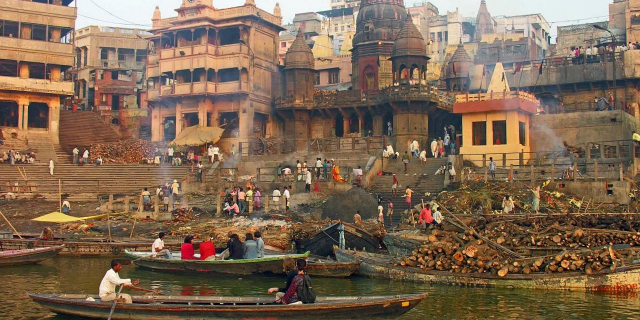
















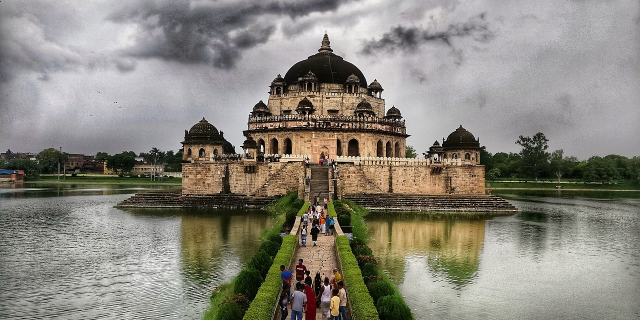
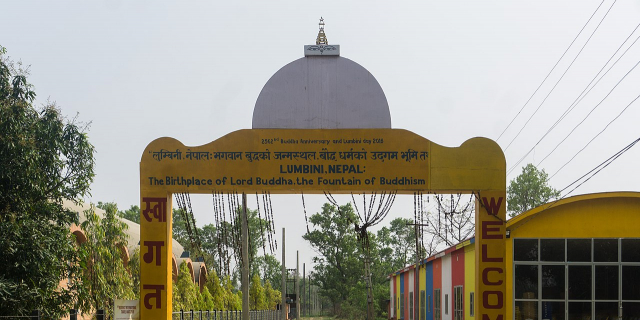








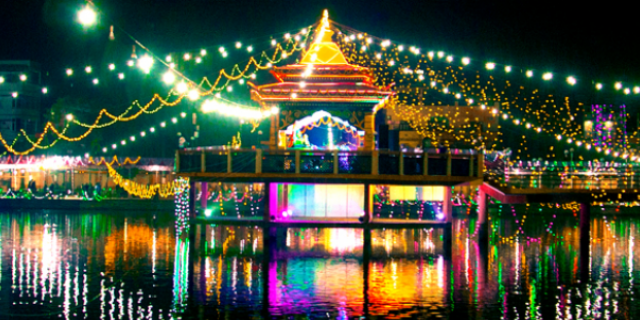
Add new comment